MARIANI’S
Virtual
Gourmet
August 23
, 2020
NEWSLETTER
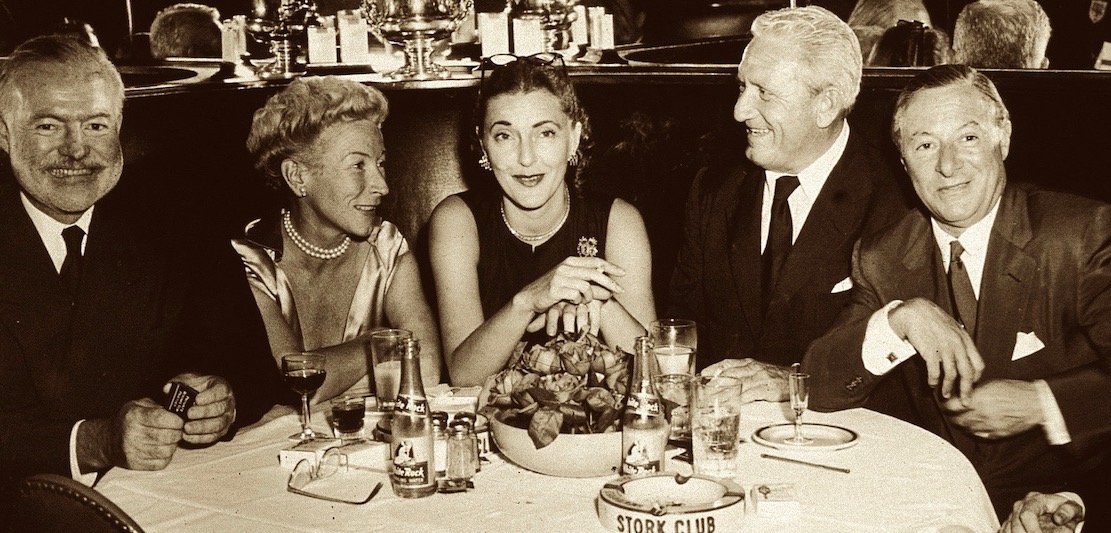
❖❖❖
IN THIS ISSUE
STAYING AND EATING
AROUND COMO, ITALY
By John Mariani
NEW YORK CORNER
LOVE AND PIZZA
Chapter Twenty-Two
By John Mariani
NOTES FROM THE WINE CELLAR
TWO HANDS OF
BAROSSA VALLEY
By John Mariani
❖❖❖
STAYING AND EATING
AROUND COMO, ITALY
By John Mariani
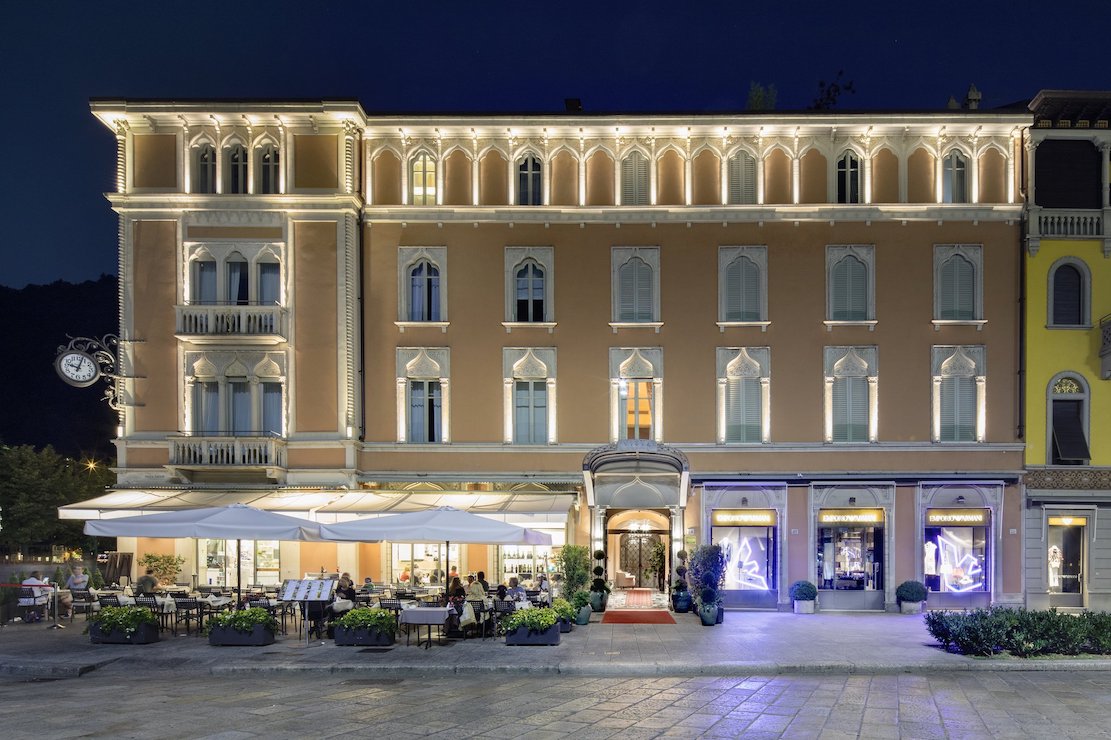
Vista Palazzo Lago di Como
Over the last
five years the small city of Como in Lombardy
has become one of my favorites in Italy. Its
size makes it far more appealing than
tourist-overrun cities like Venice, Florence and
Siena, and, while it has a great history and
splendid architecture, it has none of the
crumbling, decrepit look that passes for
antiquarian charm elsewhere. I
shall be writing sometime soon about the
attractions of the city itself, but for the
moment let me tell you about its best hotels and
restaurants, two of which are one and the same.
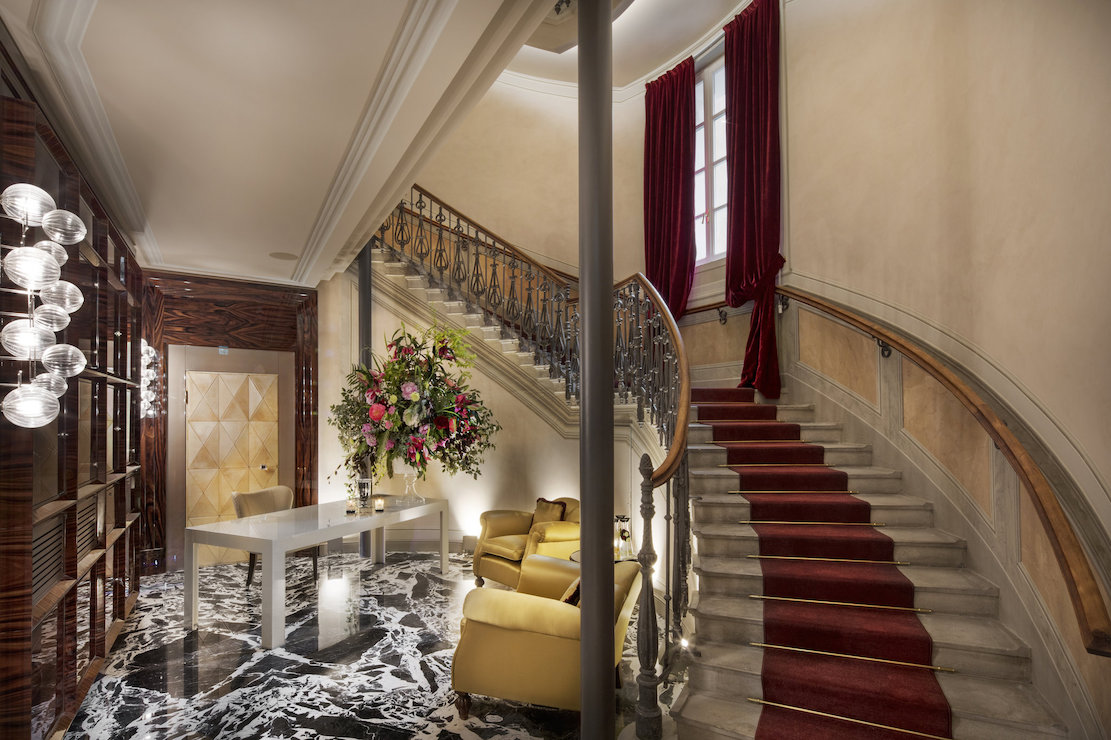 Vista Palazzo Lago di
Como (Piazza Cavour
24; 031 329111) is currently closed
because, like all hotels in Ital';s tourist areas,
there are no American tourists. Still, when it
re-opens Americans will want to stay here for all
the right reasons.
Vista Palazzo Lago di
Como (Piazza Cavour
24; 031 329111) is currently closed
because, like all hotels in Ital';s tourist areas,
there are no American tourists. Still, when it
re-opens Americans will want to stay here for all
the right reasons.
The hotel is set right on the
curve of the lake and right on the city’s main
piazza. It is a true palazzo that has kept the
best of its history in its façade and interior
while adding all the modern amenities and décor
you expect from a luxury hotel. It is not,
however, open at this writing.
There are beautiful
balustrades, glass walls, parquet floors and
marble bathrooms, and the bedrooms are large and
positioned to receive plenty of Lombardian light.
There are four floors and only eighteen rooms, so
you feel you are at a marchese’s home rather than
a cookie cutter hotel. From the top floor terrace
you have a grand panorama while the Infinity Bar
at twilight has a breathtaking view of the lake,
the mountains, and, if you’re lucky, a ripening
moon. 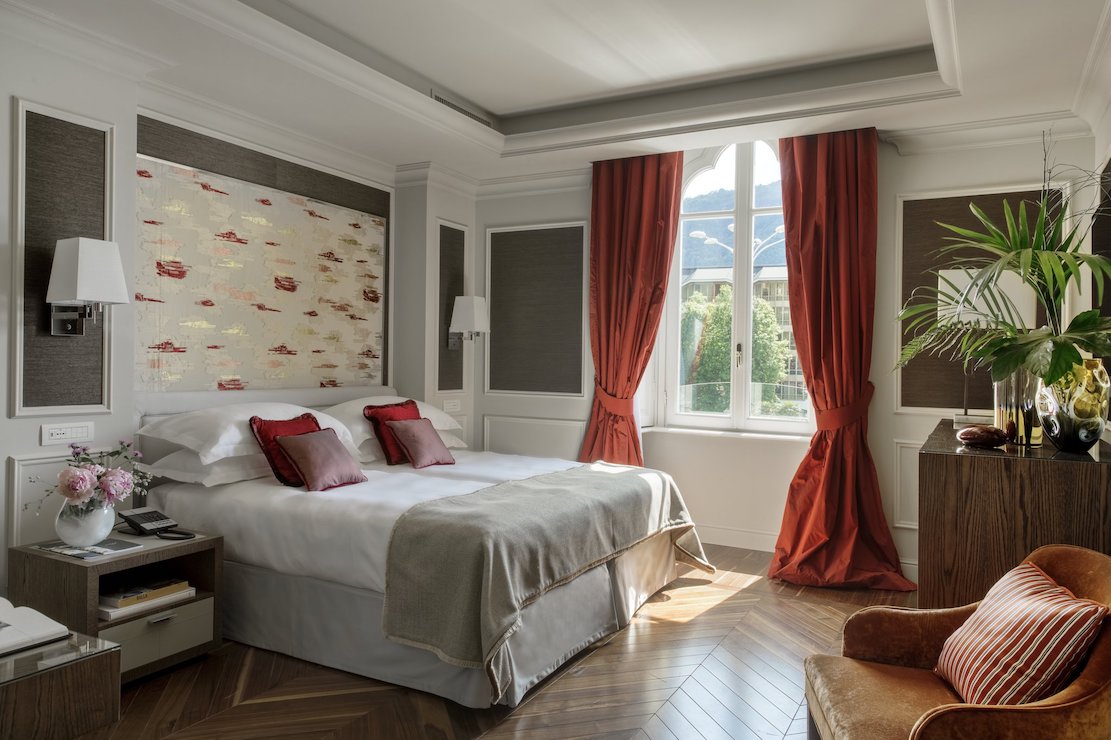
My wife and I began our meal there
(pre-COVID) with cocktails and small appetizers of
fried eggplant balls with a mozzarella dip;
croquettes of perch with aïoli sauce and kumquat;
spicy, chile-rich n’duja
raviolo with mushrooms and black olive powder.
The strikingly modern, very comfortable
small restaurant named Sottovoce
is adjacent to the bar, and Chef Stefano Mattara’s
menu is a mix of tradition and la nuova
cucina. So, we began with a “fake egg”
craftily made from carrot jelly with pecorino and
Gorgonzola fondue. A fillet of hare was scented
with mountain pine and sweet pumpkin puree and
chestnuts, and fresh sardines in a tangy-sweet saor of
onions cooked on ash. Risotto was laced with a
lush smoked burrata cream, red prawns, pistachio
crumble and bergamot aroma. Odd but interesting
was a wild rabbit ragu'
mixed with shell-shaped pasta, a chocolate
reduction, sweet and sour pomegranate, finished
with 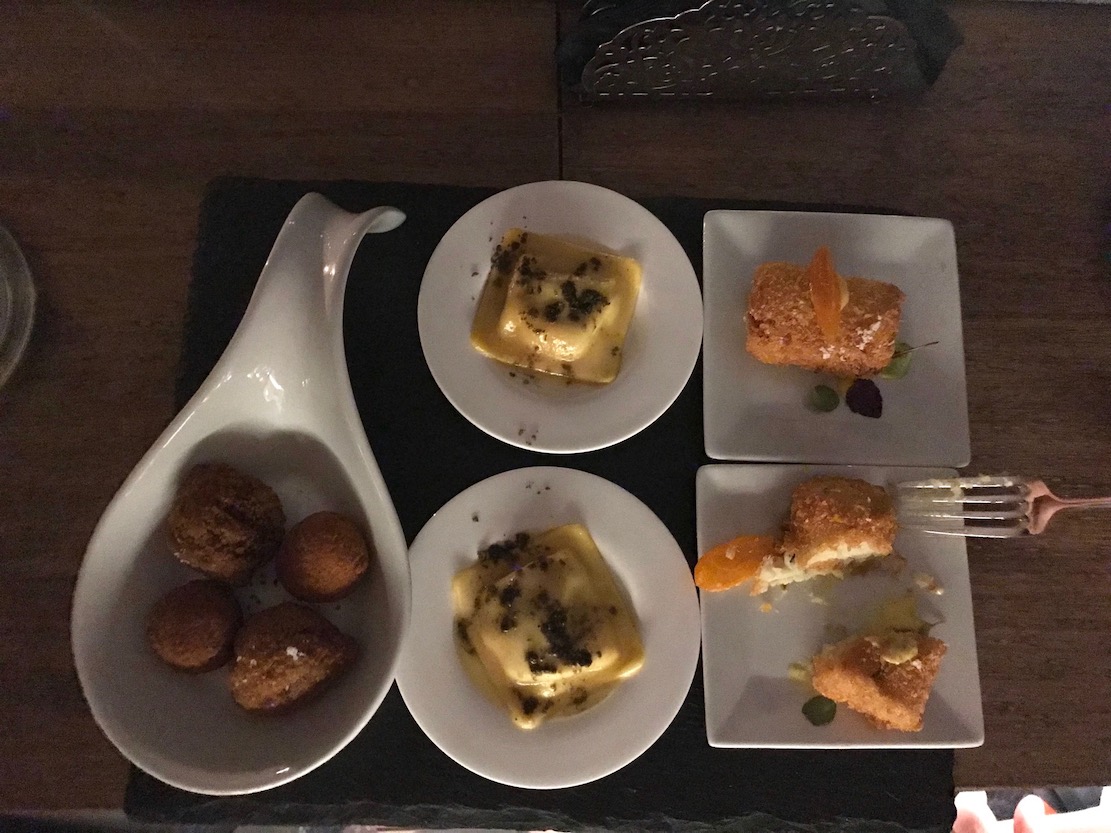 Parmigiano
foam. Octopus
was made velvety by being cooked at a low
temperature with mushrooms, hazelnuts, bread,
parsley “caviar” and aïoli, while a dish called
“Cubismo” was beef braised in red wine in a
squared-off bread crust, with creamy white polenta
and dark chocolate sauce.
Parmigiano
foam. Octopus
was made velvety by being cooked at a low
temperature with mushrooms, hazelnuts, bread,
parsley “caviar” and aïoli, while a dish called
“Cubismo” was beef braised in red wine in a
squared-off bread crust, with creamy white polenta
and dark chocolate sauce.
The first of the desserts was dark
chocolate praline with figs, ginger and pistachio
crumble, then a “Gin and Tonic” made from
gin-and-lime jelly, white chocolate cream, that
fizzy rock candy and tonic water. The last dish
was beautiful “Red Velvet” of chestnut mousse,
pomegranate sponge, caramelized cherry,
pomegranate coulis and dark chocolate.
I
know this sounds like a Lucullan gorge, but
portions were of modest size and my wife and I
each received different dishes with each course.
There is an à la carte menu but the tasting
menus—€130 (wines €70), €100 (wines €50) or €90
(wines €50)--are the best way to go. All
these were matched with Lombardian wines by bar
manager Alessandro Rabolini.
Sheraton Lake Como
(Via Per
Cernobbio 41A;031-5161), which is owned by
the DeSantis family that owns Hotel Grand Tremezzo
on the lake, is much
more modern, with 137 rooms, three restaurants,
two bars, swimming pool and spa, and conference
rooms. I did not stay there, but the rooms look to
be about what you’d expect of an upscale Sheraton
hotel in Europe. Upon entering you are greeted at
the top of an impressive white marble staircase. The Kitchen
Restaurant overlooks the garden; Kincho offers
all-day dining and pizza, while Gusto
is where Executive Chef Carlo Molon works his
culinary magic.
Gusto has not yet re-opened (later in the
fall is the goal), but it will maintain the
hotel’s dedication to fine dining with menus full
of dishes like the one we enjoyed last fall,
including the snack called sciatt made
of fried cheese with fennel; spaghetti alla carbonara;
veal shin morsels in a rich reduction; veal alla Milanese
cooked in clarified butter, and a dessert made
exclusively from vegetables named orto dolce
(sweet garden).
One caveat:
the hotel is not in Como but outside of it by
several miles, and taxis are difficult and
expensive to hire round-trip because they charge
for the outbound trip to come get you after
dinner.
In Como one of the best trattorias is Osteria
Gallo (Via
Vitani 16; 031-272-591), which has been in
the di Toma family for 37 years, so they’ve had
plenty of time to perfect the traditional food
they cook to an always-packed house. Their motto
is “Good taste and originality.” Located near the
Cathedral of Santa Maria, Osteria Gallo (gallo
means rooster, and the motif of fowl is carried
through the decor), with three rooms, is very
cozy—you have to move the chairs to let people
by—and the food comes out apace. The owner will
relate the day’s menu of four or five dishes to
you (his English is almost non-existent, but order
anything he suggests and you’ll be happy). 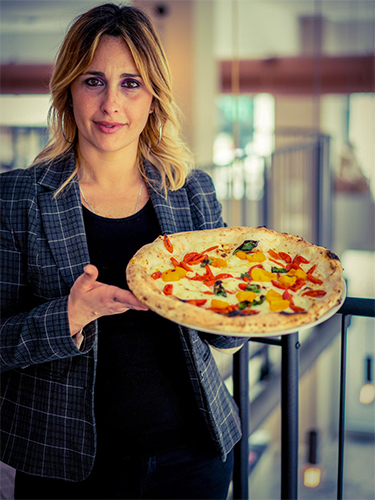
We began with a very hearty plate of
housemade penne quill pasta with braised meats and
sausage. Luscious crespelle
(crêpes) stuffed with a forcemeat came lavished
with a béchamel sauce that had a subtle smoked
cheese flavor. Succulent braised pork had sweet
prunes and chestnuts in the sauce and potatoes to
soak it up with. The vegetables are, typically,
overcooked. The wine list is exemplary. A
three-course meal per person without wine but with
tax and service will costs about €35.
Lombardy
may not be known for Neapolitan-style pizza, but
Como is lucky to have two Napule
Pizzerias (Via
Luigi Dottesio 22; 031-307-932; Piazza Domenico
Croggi 10; 031-307-824) to make a completely
authentic array. It’s run by “Papa” Umberto and
his three children, Ciro, Antonio and Katiuscia (right). In
two bright, baby blue rooms, with white
tablecloths, this fast-paced but wholly amiable
spot is the pizzeria the concierges around town
always recommend (especially if he comes from
Naples), and aside from a delicious pizza, Napule
also serves a first-rate mix of fried seafood. The
pizzas run €7 to €12.
❖❖❖
By John Mariani
LOVE AND PIZZA
Since, for the time being, I am unable to write about or review New York City restaurants, I have decided instead to print a serialized version of my (unpublished) novel Love and Pizza, which takes place in New York and Italy and involves a young, beautiful Bronx woman named Nicola Santini from an Italian family impassioned about food. As the story goes on, Nicola, who is a student at Columbia University, struggles to maintain her roots while seeing a future that could lead her far from them—a future that involves a career and a love affair that would change her life forever. So, while New York’s restaurants remain closed, I will run a chapter of the Love and Pizza each week until the crisis is over. Afterwards I shall be offering the entire book digitally. I hope you like the idea and even more that you will love Nicola, her family and her friends. I’d love to know what you think. Contact me at loveandpizza123@gmail.com
—John Mariani
To read previous chapters go to archive (beginning with March 29, 2020, issue.
LOVE AND PIZZA
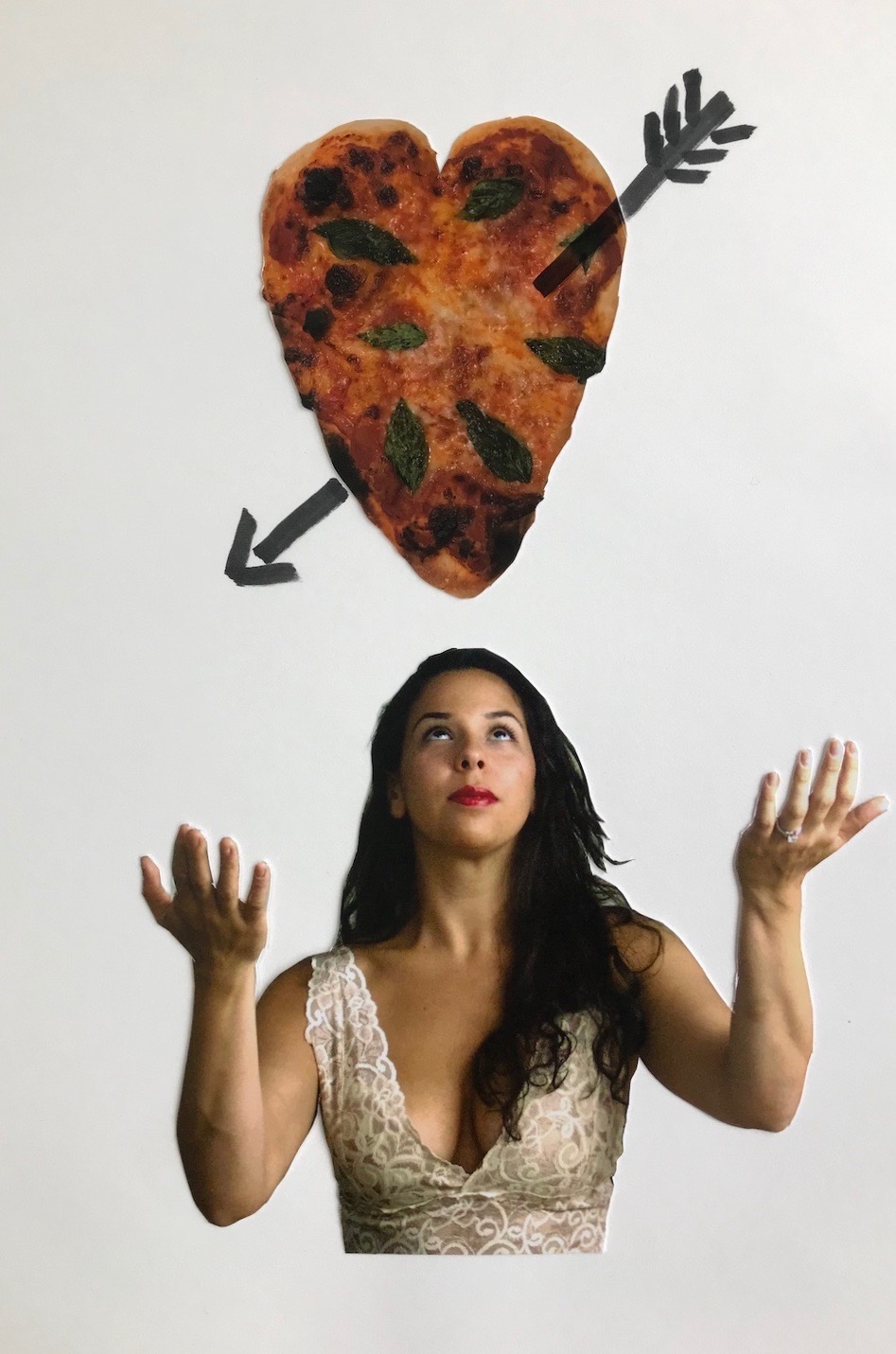
Cover Art By Galina Dargery
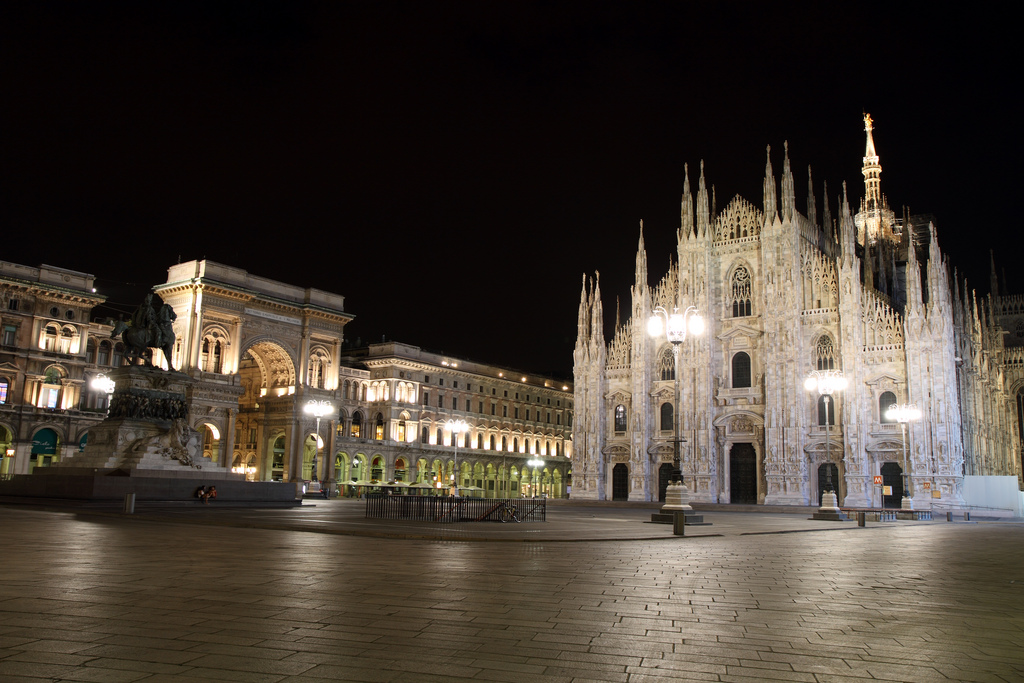
The
roast pigeon arrived, just as Giancarlo described
it—perfectly crisp on the outside, medium-rare
inside, complemented by a reduction of red wine
and fruit. If
possible, the Barbaresco tasted even better with
this dish than with the risotto.
The two young people’s conversation never
flagged over the evening, and as they finished the
last of the wine, during a slight lull, Giancarlo
said, “Nicola, tell me more about your neighborhood
in the Bronx.”
He tried to say the name of the borough with
real interest.
Nicola patted her lips with her napkin and
said, “Well, the Bronx is really very special. I know it
has this reputation for poverty and crime—and
there’s a lot of it—but where I come from, the
Belmont section, it’s very Italian and everybody
looks out for one another and it’s very safe. We’re a
very close-knit community, I’d say, maybe one square
mile or so, and we all go to the same church and all
buy at the same markets and eat at the same
restaurants. It’s
very middle-class now, but it still looks about the
way it did back in the 1950s, maybe a little shabby. The
apartment houses don’t look like much from the
outside but many of them have a good deal of room—or
rooms. Our
house has four bedrooms.” She paused, smiled and
asked, “How many bedrooms do you have in your
house?”
Giancarlo shook his head and replied, “I
really have no idea. I’ve never counted them. Some of
them I’ve never seen. They’re for the servants.”
“You have a lot of servants?”
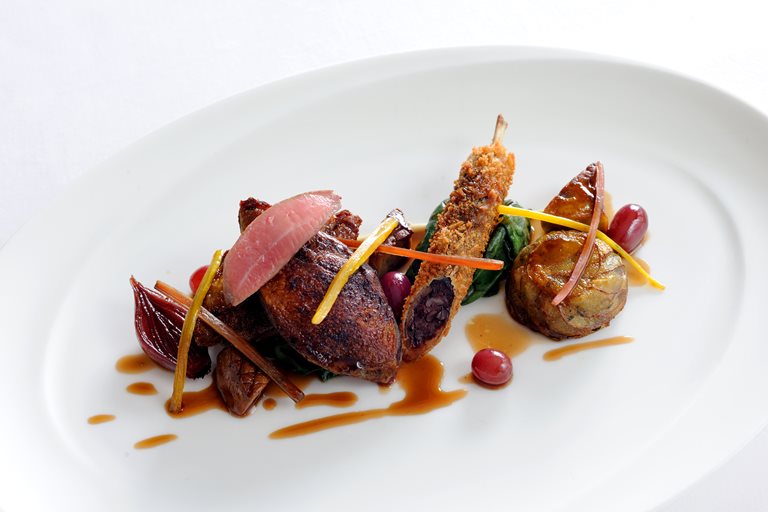 “Oh, not so many anymore. At the
villa near Alba we have a maggiordomo—what
you call a butler—for my father and my mother has a
cameriera. We had
nannies while we were growing up—we call them bambinaia—and
there is a chef and two cooks. Let me
see, we have people who take care of the land and
the gardens, a vineyard manager. . . .”
“Oh, not so many anymore. At the
villa near Alba we have a maggiordomo—what
you call a butler—for my father and my mother has a
cameriera. We had
nannies while we were growing up—we call them bambinaia—and
there is a chef and two cooks. Let me
see, we have people who take care of the land and
the gardens, a vineyard manager. . . .”
“You have a vineyard?”
“Si,
it’s very small but it produces a nice white wine
called Erbaluce.
Just for the family and guests.”
Nicola
had wondered just how munificently the Cavallacci
family lived and was duly impressed by what she’d
just heard.
“Nicola,” said Giancarlo, “Someday you must
come visit. I’m sure you would enjoy the villa. The
house in Torino is not as nice, big but very formal.
I spend as much time at the villas as possible.”
Nicola, trying poorly to be coy, said, “That
sounds lovely.
Maybe after we visit Venice?”
Giancarlo, knowing the age-old game was in
play, replied, “Whatever you wish. Now, Signorina
Santini, our lovely dinner is finished, unless you'd
like a digestiva?”
“Giancarlo,” she said, lowering her eyelids
by half, “I don’t think I want anything else to make
me forget the Barbaresco. It was too
perfect.”
“Allora,
I will walk you back to your school,” he said,
getting up from the table and helping her from her
chair. Nicola noticed he never asked for the check,
then realized the family must have a house account.
The night was a little chilly by then, but as
Giancarlo offered her his jacket, Nicola felt the
warmth of his body on hers. Little
was said during the slow stroll to the dorm, but
upon arriving, Giancarlo spoke first.
“Nicola, I had a beautiful evening with you. I am so
glad we met at Signora Palma’s house.” Nicola
stifled the urge to say she thought Signora Palma
had planned it all along.
“I loved every minute of it, Giancarlo.”
“Then perhaps—well, I think I will stay in
Milano for the weekend—perhaps we could dine
together again tomorrow night? 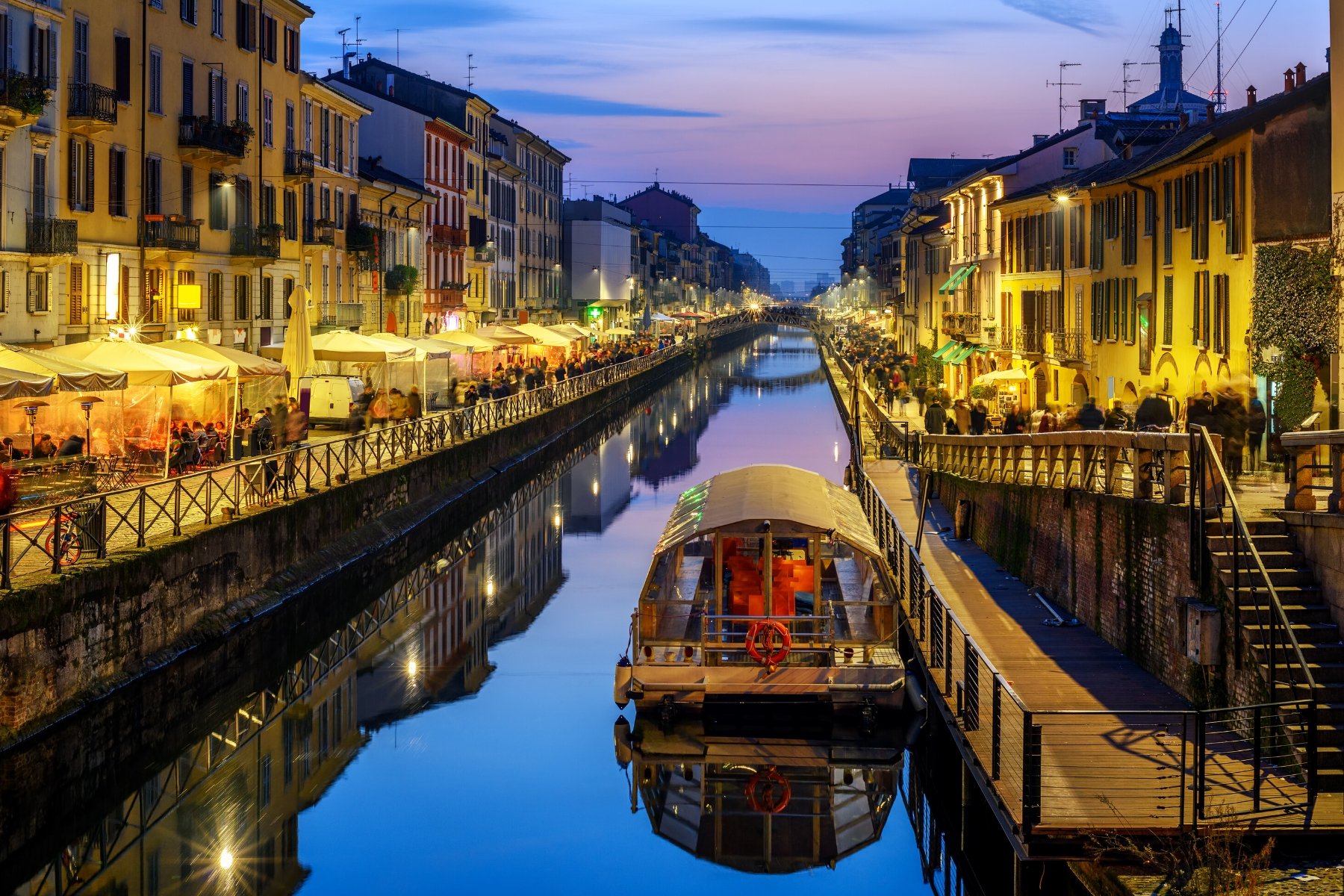 Somewhere simple. Ah, I know,
one of those favorite trattorias of yours that I’ve
never been to.”
Somewhere simple. Ah, I know,
one of those favorite trattorias of yours that I’ve
never been to.”
Nicola had anticipated the cordiality of the
invitation and replied, “Oh, Giancarlo, that would
be terrific. Have
you ever been to Al Porto in Navigli? Best
seafood in the city.”
Navigli,
Milan
“Then Al Porto it will be. I’ll make a
reservation.”
Then, at the risk of being too forward
towards the handsome marchese, Nicola said, “Y’know,
Giancarlo, tomorrow during the day I was planning on
visiting the Museo del Cinema. Would you
like to join me?”
Giancarlo smiled broadly and said, “Ah,
Nicola, I would like nothing better. I’m
ashamed to say I’ve never been there. We have a
good one in Torino, so I’m very interested in seeing
this one in Milano.”
After setting the times for both the museum
visit and dinner, Giancarlo said, “Allora, I
count the hours till I see you again, Nicola.” Then
he kissed her three times, twice on her cheeks, once
again on the right, his lips just barely touching
her skin; he pulled away slightly then embraced her
and whispered in her ear, “Domani.”
“Domani,
Giancarlo.” Then, realizing she still had his
jacket, she called out, "Giancarlo, la tua jacca!"
Giancarlo
smiled very broadly and said, "It's a warm night. I
walk and pick it up tomorrow."
And,
looking back over his shoulder several times as
Nicola stood outside her dorm, Giancarlo blew her
one last kiss and said “Buona notte,
Signorina Santini!” Nicola
blew a kiss back and waved, “Buona notte,
Marchese Cavallacci!”—savoring the sound of
the words on her tongue.
Nicola walked up to her room, leaned against
the door a few moments before going in, turned the
handle and found Catherine, Suzanne, Jenny and
Mercédes sitting waded-eyed on the beds. They saw
Giancarlo's jacket
draped over their friend's shoulders.
In
unison they all said, “So? Tell
us!”
TWO HANDS OF
BAROSSA VALLEY
Interview
with Michael Twelftree – Proprietor and
Managing Director, Two Hands Wines
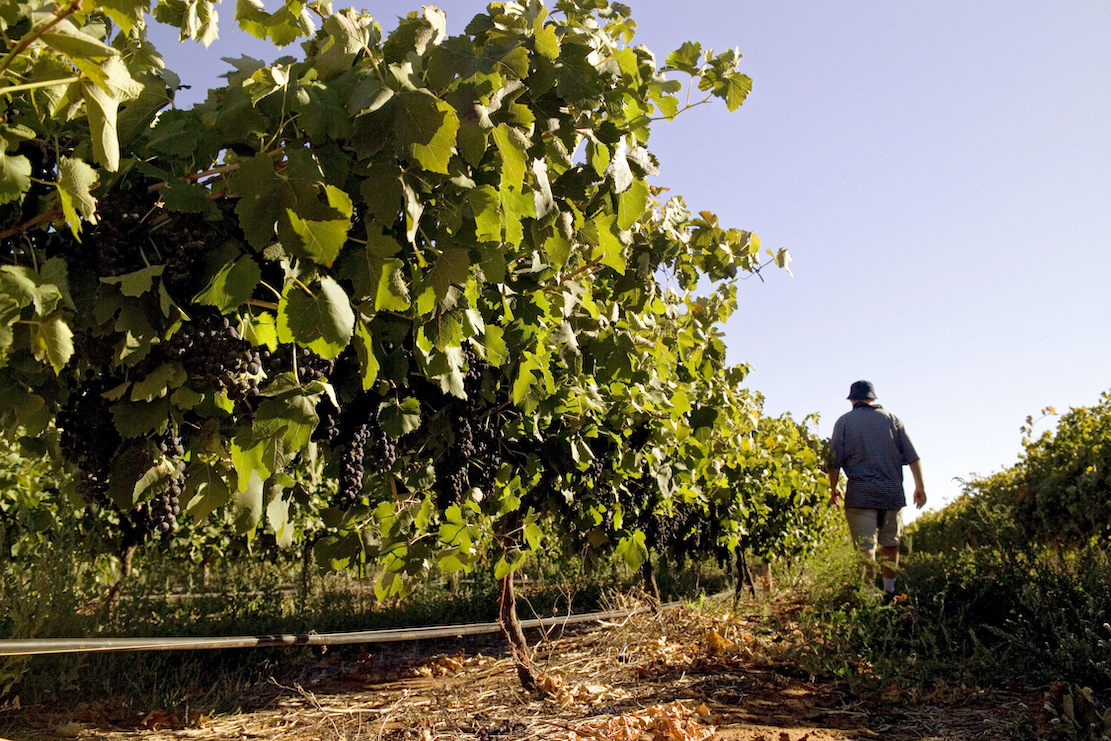
South Australia has
been producing
wine since the 1820s, and by 1930 seventy-five
percent of the country’s wine
has come from that fertile region. By the turn
of this century the winemakers
of the Barossa Valley have been slowly moving
away from the high-alcohol
blockbusters of the past once lauded by the wine
media, and Two Hands, founded
in 1999 by Michael
Twelftree and Richard Mintz with a
$30,000 investment, has concentrated on Shiraz
by breaking away from the region’s
“formulaic style” in favor of “showcasing the
diversity of Australian Shiraz by
highlighting regional and vineyard
characteristics by allowing the fruit to be
the primary feature of the wines.”
Their first vintage was 2,000
and a state-of-the-art
winery was built by 2004. Since then Two Hands has
received high accolades, and
is now co-owned by Twelftree and Colorado native
Tim Hower, who have been expanding
their estate with new vineyards. I interviewed
Twelftree by e-mail to ask how things have
gone in the Barossa Valley since they arrived.
What was the state of
winegrowing in Barossa in 1999? How has it
changed?
Viticulture when we started was very
basic; every application was done the same way
year in year out, without working with the
conditions of season. Most vineyards were spur
pruned,* as it created smaller bunches (90 to 120
grams), little or no catcher wires or lifting
wires were in place, and the vineyards pretty much
gave you what you got. Now, we are much more hands
on, and employ various sustainable viticultural
measures to ensure our vineyard produces the best
possible fruit each year. We were also the new
kids on the block, in a tapestry of generational
wineries. We’ve definitely cemented our place in
Barossa’s history over the 20 years.
* Spur pruning is
done on vines that retain one or two pairs of
long canes (a permanent cordon) trained along a
trellis system. Each winter, new canes that have
grown along the permanent cordon are cut back to
a small shoot containing two buds, known as a
spur. In spring new growth develops from the
buds on the spur.
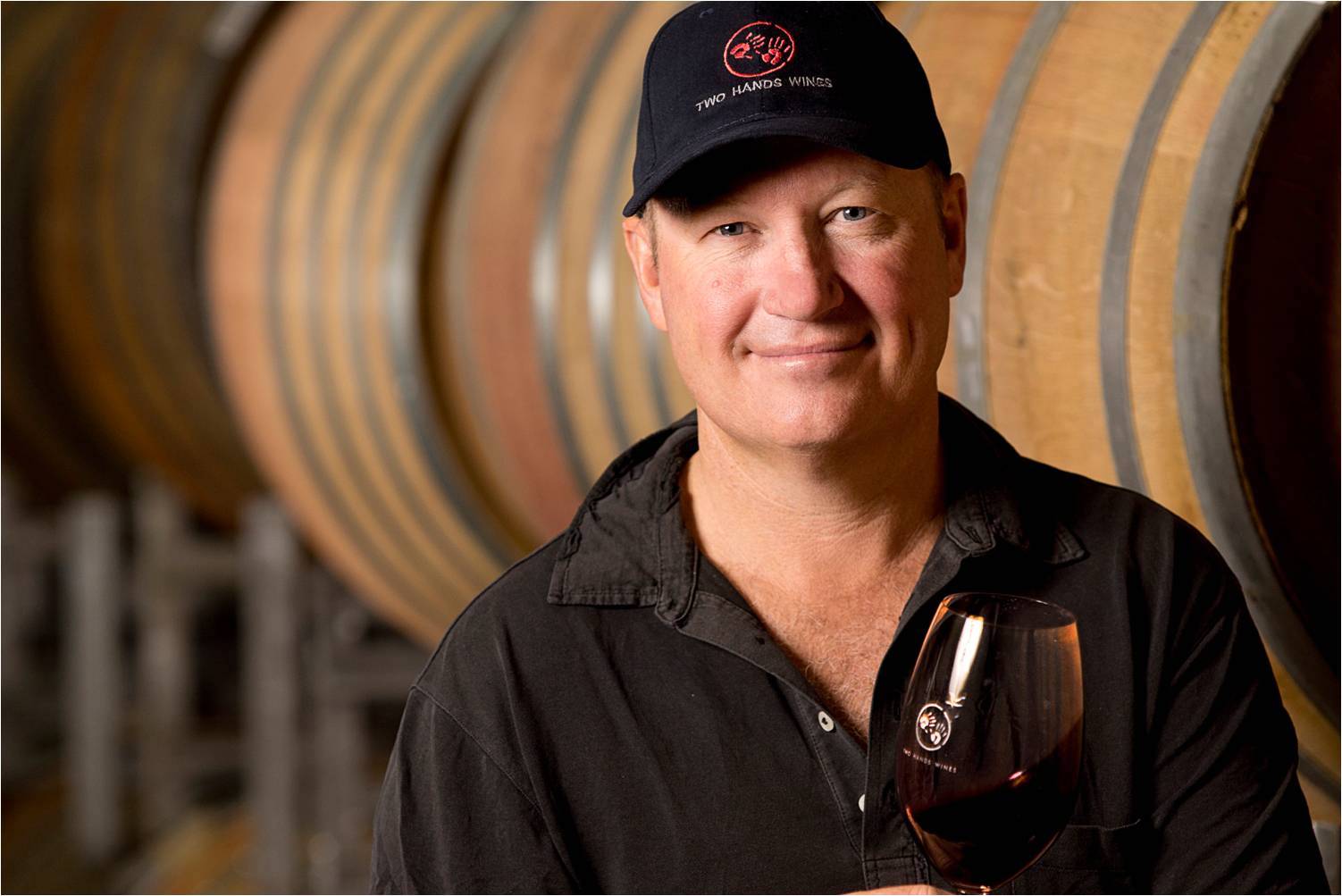
What is Massale
Selection?
Massale is the
selection of cuttings from an existing vineyard.
This gives you the chance to pick wood from the
best and healthiest vines. Essentially, it’s
“paying it forward”—using material from a great
and talented vineyard in future plantings in a new
home, allowing for interesting possibilities with
more diverse plant material going forward.
What is cane pruned?
This is a style of
winter pruning. We select two canes from the
previous season and place them along the pruning
wire for support. When pruning, you leave to small
two-bud spurs around the head of the vine to
create the growing canes for the following season.
This type of pruning means that the vines need
less water through the growing season and produces
larger bunch configurations (140 to 160 grams)
that ripen slower. Most importantly, this pruning
style mitigates the risk of onset of Esca (Eutypa)
as the vines’ arms are replaced each season. Vines
that are pruned with permanent arms have large
pruning wounds for the Esca spores to sit on in
the winter months,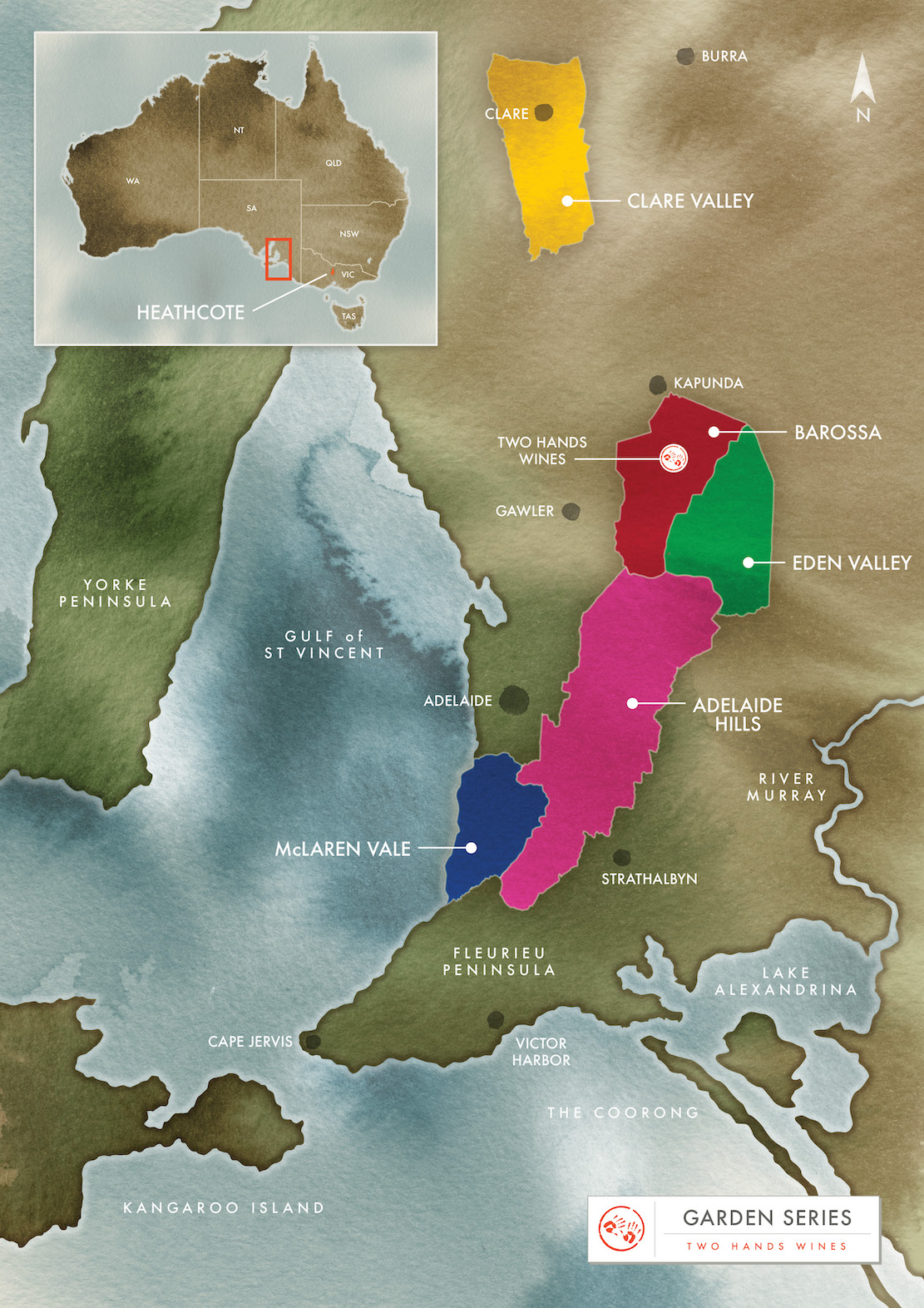 that then
start to kill the vine from the outside in over as
little as 4 to 6 growing seasons.
that then
start to kill the vine from the outside in over as
little as 4 to 6 growing seasons.
How Is Barossa Valley
in Australia similar to and not similar to other
wine regions? What others is it most like?
In Barossa we are
dealing with the 34th Latitude in the Southern
Hemisphere, whereas the Northern Rhône is at the
45th and Napa is at the 38th in the Northern
Hemisphere. This means we are much closer to the
Mediterranean Climate. I could only see us being
climatically similar to the Western Cape of South
Africa.
You say, “Wine growing
is a craft with nothing left to chance.” To
some, especially in Europe, this would suggest
“manipulating” the wines and vineyards. Please
explain. Do you let Nature take its course or
work to change it?
Essentially this
means that we believe that wine production starts
in the vineyard. Healthy and vital vines produce
exceptional fruit. Exceptional fruit produces
exceptional wine. I’ve traveled extensively
throughout Europe, and have learnt from and been
inspired by the best producers in France and
Italy. We employ similar techniques in our
vineyards to those in Europe, so we’re not
manipulating anything.
Our team works tirelessly in
the vineyard each year to ensure our vineyards are
the best they can be. Each of our estate vineyards
are cane pruned by hand to assist the vines to
survive our warm summers. Each vineyard is pruned,
trained and picked by hand to minimize tractor
movements and soil compaction. In winter, cover
crops are grown between the rows to promote soil
vitality and our Scottish Highland cattle
contribute to the 300 tonnes of organic compost we
add back into our vineyards each year, in order to
support the natural balance within our vines. Our
winemaking approach is the same. With exceptional
fruit, we produce good wine.
You say you don’t much
like new oak. Why?
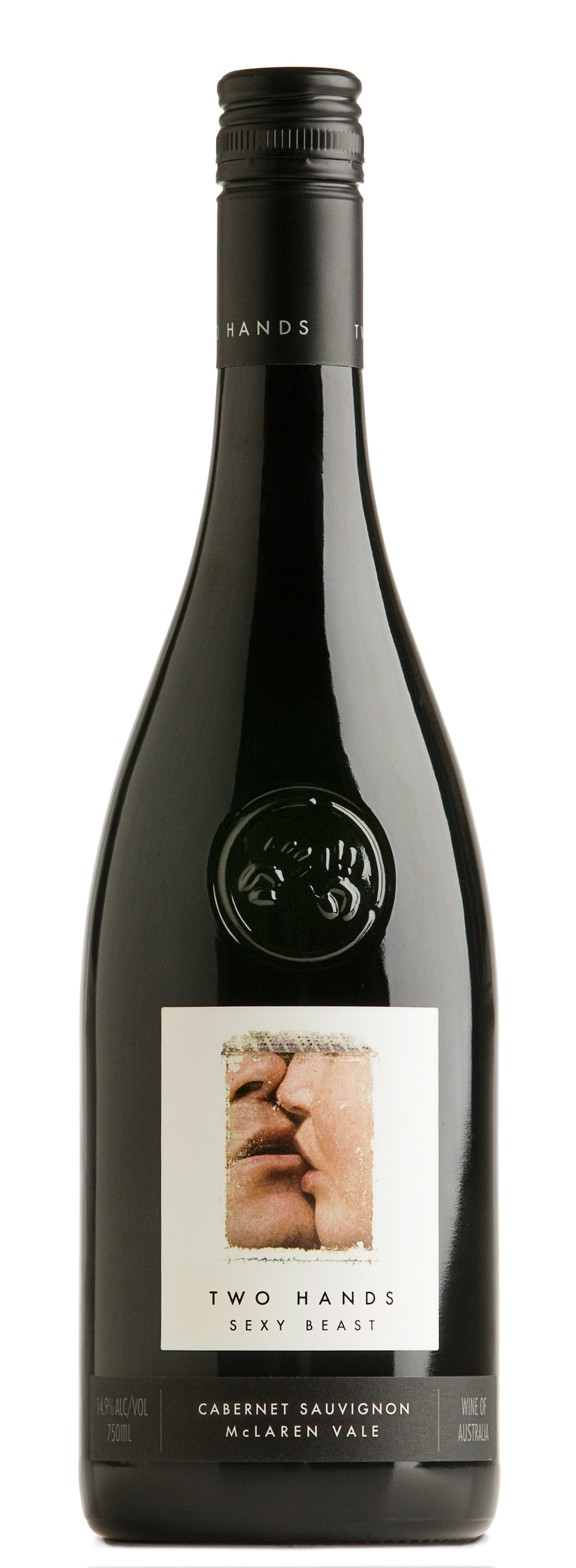 I always prefer tannins from the
fruit to tannins shown by oak in wines. Our oak
program is very important, as we get the best
results from our one-, two- and three-year-old
barrels. I like the oak to complement the fruit
and work with the mouthfeel and texture of a wine.
Oak is not a flavor enhancer; it is an oxidative
tool. It is incredibly important in our winemaking
style, but I would always prefer a great vineyard
to be the hallmark of our wines than the
tonnellerie.
I always prefer tannins from the
fruit to tannins shown by oak in wines. Our oak
program is very important, as we get the best
results from our one-, two- and three-year-old
barrels. I like the oak to complement the fruit
and work with the mouthfeel and texture of a wine.
Oak is not a flavor enhancer; it is an oxidative
tool. It is incredibly important in our winemaking
style, but I would always prefer a great vineyard
to be the hallmark of our wines than the
tonnellerie.
How did you come up
with the names of the wines?
Most really do
happen by complete accident, to be honest. Many
are lines in favorite songs or from movies that
make me laugh and that I enjoy. The Garden Series
is named after members of my original business
partner’s family and mine. I love the fact that we
can make people smile and brighten their day just
a little when they grab a bottle of Sexy Beast,
Gnarly Dudes or Bella’s Garden.
You say you have 97
acres of vineyards and buy from growers. What
percentage?
One-third of our
grapes are from our estate-owned vineyards, and
the balance we buy on long-term contract with
growers. We value our relationship with growers
immensely, as this was the foundation of our
business 20-odd years ago. I am a firm believer
that you don’t need to own a lot of vineyards; you
only need to the own the best, and I believe we do
own the best.
How is climate change
affecting Australian viticulture? I know
Antarctica is very far away but the destruction
of the ice is concerning?
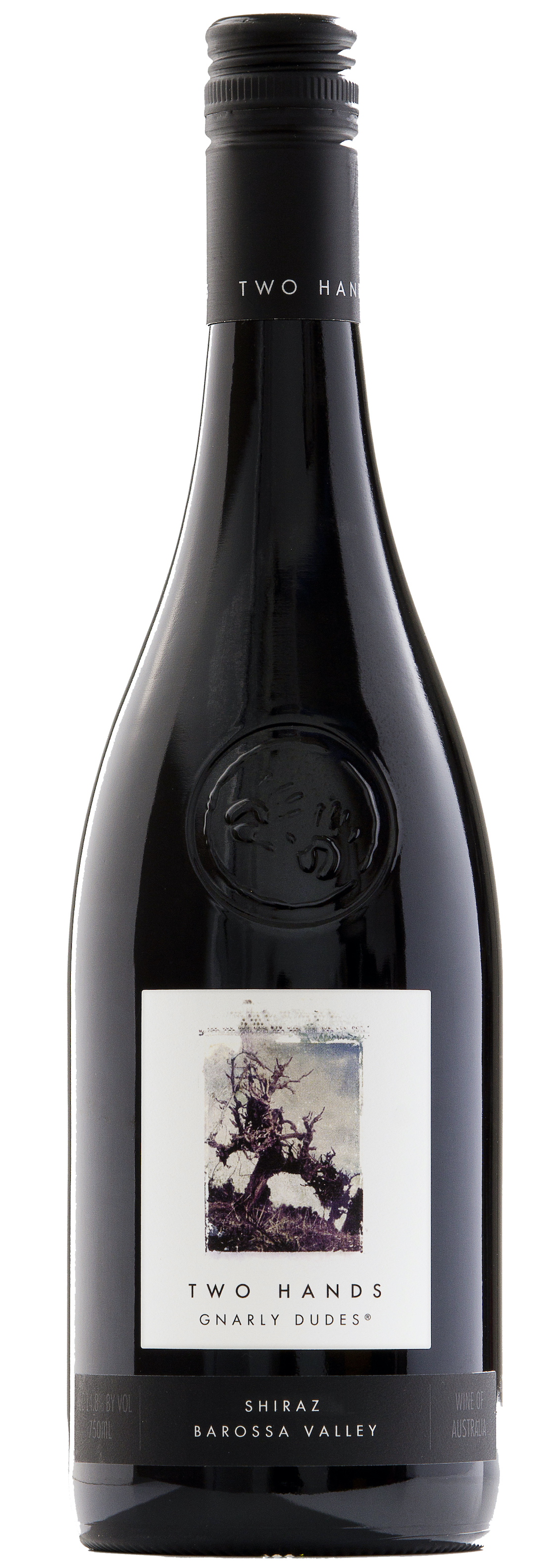 Climate change is
affecting us greatly and we have had to react to
the way we grow our grapes. First, we irrigate
mostly in winter to make sure our soils have
moisture deep down for the duration of the growing
season and the vine needs to work to access it.
All our vine rows run East to West on a high VSP
(Vertical Shoot Position), which creates shading
on our fruit zone at the warmest part of the days
in summer. We use sap flow monitoring to
communicate with the vines on how they are
working. This allows us to add irrigation when the
vines actually need it and saves us 30% to 50% of
our water over the growing season. Straw is spread
under vines to keep the soil temperature and
surface roots cool on hot days, as well as adding
vital carbon back into the soil. Leading into
harvest we spray all the northern sides of our
canopies with Kaolin Clay to act as “sunburn
cream” for exposed bunches to ensure we get
perfectly ripe fruit without burn or shrivel. So,
yes, Climate Change is a real concern, but we are
reacting as best as possible in our vineyards.
Climate change is
affecting us greatly and we have had to react to
the way we grow our grapes. First, we irrigate
mostly in winter to make sure our soils have
moisture deep down for the duration of the growing
season and the vine needs to work to access it.
All our vine rows run East to West on a high VSP
(Vertical Shoot Position), which creates shading
on our fruit zone at the warmest part of the days
in summer. We use sap flow monitoring to
communicate with the vines on how they are
working. This allows us to add irrigation when the
vines actually need it and saves us 30% to 50% of
our water over the growing season. Straw is spread
under vines to keep the soil temperature and
surface roots cool on hot days, as well as adding
vital carbon back into the soil. Leading into
harvest we spray all the northern sides of our
canopies with Kaolin Clay to act as “sunburn
cream” for exposed bunches to ensure we get
perfectly ripe fruit without burn or shrivel. So,
yes, Climate Change is a real concern, but we are
reacting as best as possible in our vineyards.
What do you see for the
winery’s future in 10 years?
To keep on keeping
on. We have a great team that really enjoy what
they do, and we will continue to refine the styles
of our wines and offer great quality to the end
consumer. The race is never won, you just get
better at running it.
How has Covid affected
the winery.
Covid has created a
contrasting time for our winery; it hit in the
Barossa Valley whilst we were in the middle of our
harvest. We
had to react to a number of different protocols at
the time, but we were very lucky to complete the
harvest without a glitch. After the harvest we had
to re-assess every area of the business to live
with the onset of Covid. We have been very lucky
in South Australia, as to date we have only had
459 cases and 4 deaths from Covid. The Australian
government has been very supportive with a
job-keeper package, and we have been able to keep
every employee on either a 3-, 4- or 5-day work
week, depending on the area that they work in the
business. This is interesting, as the vineyard and
winery need to continue to work at their full
capacity, as we are dealing with a natural
agricultural product in real time. On the business
front we are well positioned to get through the
pandemic and have engineered the business for the
slow bumpy U-shaped recovery.
Sponsored by

Any of John Mariani's books below may be ordered from amazon.com.
 The Hound in Heaven
(21st Century Lion Books) is a novella, and
for anyone who loves dogs, Christmas, romance,
inspiration, even the supernatural, I hope you'll find
this to be a treasured favorite. The story
concerns how, after a New England teacher, his wife and
their two daughters adopt a stray puppy found in their
barn in northern Maine, their lives seem full of promise.
But when tragedy strikes, their wonderful dog Lazarus and
the spirit of Christmas are the only things that may bring
his master back from the edge of despair.
The Hound in Heaven
(21st Century Lion Books) is a novella, and
for anyone who loves dogs, Christmas, romance,
inspiration, even the supernatural, I hope you'll find
this to be a treasured favorite. The story
concerns how, after a New England teacher, his wife and
their two daughters adopt a stray puppy found in their
barn in northern Maine, their lives seem full of promise.
But when tragedy strikes, their wonderful dog Lazarus and
the spirit of Christmas are the only things that may bring
his master back from the edge of despair. WATCH THE VIDEO!
“What a huge surprise turn this story took! I was completely stunned! I truly enjoyed this book and its message.” – Actress Ali MacGraw
“He had me at Page One. The amount of heart, human insight, soul searching, and deft literary strength that John Mariani pours into this airtight novella is vertigo-inducing. Perhaps ‘wow’ would be the best comment.” – James Dalessandro, author of Bohemian Heart and 1906.
“John Mariani’s Hound in Heaven starts with a well-painted portrayal of an American family, along with the requisite dog. A surprise event flips the action of the novel and captures us for a voyage leading to a hopeful and heart-warming message. A page turning, one sitting read, it’s the perfect antidote for the winter and promotion of holiday celebration.” – Ann Pearlman, author of The Christmas Cookie Club and A Gift for my Sister.
“John Mariani’s concise, achingly beautiful novella pulls a literary rabbit out of a hat – a mash-up of the cosmic and the intimate, the tragic and the heart-warming – a Christmas tale for all ages, and all faiths. Read it to your children, read it to yourself… but read it. Early and often. Highly recommended.” – Jay Bonansinga, New York Times bestselling author of Pinkerton’s War, The Sinking of The Eastland, and The Walking Dead: The Road To Woodbury.
“Amazing things happen when you open your heart to an animal. The Hound in Heaven delivers a powerful story of healing that is forged in the spiritual relationship between a man and his best friend. The book brings a message of hope that can enrich our images of family, love, and loss.” – Dr. Barbara Royal, author of The Royal Treatment.
 |
The Encyclopedia of American Food and Drink by John F. Mariani (Bloomsbury USA, $35) Modesty forbids me to praise my own new book, but let me proudly say that it is an extensive revision of the 4th edition that appeared more than a decade ago, before locavores, molecular cuisine, modernist cuisine, the Food Network and so much more, now included. Word origins have been completely updated, as have per capita consumption and production stats. Most important, for the first time since publication in the 1980s, the book includes more than 100 biographies of Americans who have changed the way we cook, eat and drink -- from Fannie Farmer and Julia Child to Robert Mondavi and Thomas Keller. "This book is amazing! It has entries for everything from `abalone' to `zwieback,' plus more than 500 recipes for classic American dishes and drinks."--Devra First, The Boston Globe. "Much needed in any kitchen library."--Bon Appetit. |
"Eating Italian will never be the same after reading John Mariani's entertaining and savory gastronomical history of the cuisine of Italy and how it won over appetites worldwide. . . . This book is such a tasteful narrative that it will literally make you hungry for Italian food and arouse your appetite for gastronomical history."--Don Oldenburg, USA Today. "Italian
restaurants--some good, some glitzy--far
outnumber their French rivals. Many of
these establishments are zestfully described
in How Italian Food Conquered the World, an
entertaining and fact-filled chronicle by
food-and-wine correspondent John F.
Mariani."--Aram Bakshian Jr., Wall Street
Journal.
"Equal parts
history, sociology, gastronomy, and just
plain fun, How Italian Food Conquered the
World tells the captivating and delicious
story of the (let's face it) everybody's
favorite cuisine with clarity, verve and
more than one surprise."--Colman Andrews,
editorial director of The Daily
Meal.com. "A fantastic and fascinating
read, covering everything from the influence
of Venice's spice trade to the impact of
Italian immigrants in America and the
evolution of alta cucina. This book will
serve as a terrific resource to anyone
interested in the real story of Italian
food."--Mary Ann Esposito, host of PBS-TV's
Ciao
Italia. "John Mariani has written the
definitive history of how Italians won their
way into our hearts, minds, and
stomachs. It's a story of pleasure over
pomp and taste over technique."--Danny Meyer,
owner of NYC restaurants Union Square
Cafe, The Modern, and Maialino.
|
 |
 |
 |
 |
 |
 |
 |
 |
 Everett Potter's Travel Report:
Everett Potter's Travel Report: 
 Eating Las Vegas
JOHN CURTAS has been covering the Las Vegas
food and restaurant scene since 1995. He is
the co-author of EATING LAS VEGAS – The 50
Essential Restaurants (as well as
the author of the Eating Las Vegas web site: www.eatinglasvegas.
He can also be seen every Friday morning as
the “resident foodie” for Wake Up With the
Wagners on KSNV TV (NBC) Channel 3 in
Las Vegas.
Eating Las Vegas
JOHN CURTAS has been covering the Las Vegas
food and restaurant scene since 1995. He is
the co-author of EATING LAS VEGAS – The 50
Essential Restaurants (as well as
the author of the Eating Las Vegas web site: www.eatinglasvegas.
He can also be seen every Friday morning as
the “resident foodie” for Wake Up With the
Wagners on KSNV TV (NBC) Channel 3 in
Las Vegas.
MARIANI'S VIRTUAL GOURMET
NEWSLETTER is published weekly. Publisher: John Mariani. Editor: Walter Bagley. Contributing Writers: Christopher Mariani,
Robert Mariani, Misha Mariani, John A. Curtas, Gerry Dawes, Geoff Kalish,
and Brian Freedman. Contributing
Photographer: Galina Dargery. Technical
Advisor: Gerry
McLoughlin.
If you wish to subscribe to this
newsletter, please click here: http://www.johnmariani.com/subscribe/index.html
© copyright John Mariani 2020

